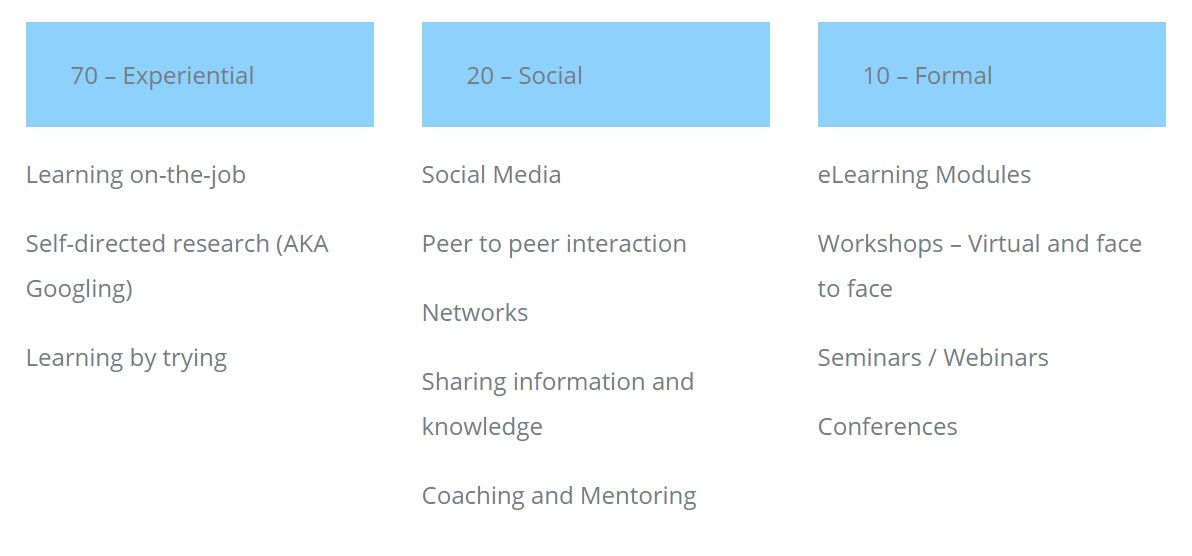In the rush to get your learning online, don’t forget something fundamental
April 8, 2020
In workplace learning, the terms formal, social and experiential are often used to categorise how people learn. There are many variations and models around on this concept and you’ve most likely heard of 70-20-10.
The breakdown usually looks like this…

Ratios within models such as this will always vary between organisations and roles, this is not one size fits all. The important factor to consider is that while formal learning events such as workshops and eLearning modules are often the go-to, are trackable and can be produced reasonably quickly, they are not necessarily the best way for people to actually learn. This is why it is so important to ensure there is a variety of interesting, engaging and relevant learning opportunities on offer.
This is more important than ever in our rapidly changing workplaces. But as we all shift to remote working, there has been a big push towards getting content into digital formats and using this time to learn or train online.
Increasing digital learning should not just mean an increase in formal learning
The formality of doing an eLearning module or even sitting in a virtual classroom remains a very static experience and opportunities for social outlets or experiential learning are greatly diminished. It would almost be a direct reverse of 70-20-10 where up to 70% of the learning experience is formalised. Instructional designers and learning managers are well aware of the importance of designing well structured, engaging and concise learning materials. The challenge is to marry this with the dramatic increase demand for digital content. Invariably this results in the dreaded electronic page turner which have very little engagement and give the learner very little chance of retaining the information.
How to cater for Social and Experiential learning quickly and simply
In previous articles we have discussed such things as social learning and user generated content. Modern Learning Platforms are designed to help cater for a wide variety of learning methods, not just stand-alone eLearning modules or virtual classroom sessions.
Social learning
Adopting social elements as part of your online learning strategy helps alleviate the formality of eLearning or virtual meetings. It encourages users to provide insight and their perspectives on a subject. Enabling User Generated Content (UGC) allows content like video, text and images to be contributed. Contributions could be as simple as a like or comment but allowing constructive comments and giving recognition for valuable contributions provides a deeper level of connection to the content than static delivery.
Pathways
A learning pathway is a great way to break up the learning a person is required to do. It can include a variety of content types and exercises, not just eLearning modules. A pathway can consist of formal elements as well as social, and experiential assignments.
Content Integration and AI recommendations
The integration of content from sources external to your system is a great way to allow for a more experiential learning. Allow your learners to browse through content, select content that is relevant to them or a topic at hand and then provide a method for them to discuss the relevance or their perspective on the topic. This is in a much more experiential method than delivering static content. Enable them to find information for themselves, and trust that they can do it!
Artificial Intelligence can then be used to gauge what interests and learning a person seeks out and then provide recommendations.
Speak to us about how ClearXP can provide a solution to support your digital learning strategy and quickly ensure any digital learning is much more than a formal experience.
We are an LXP provider with deep knowledge and experience in delivering learning technologies to Australian businesses.